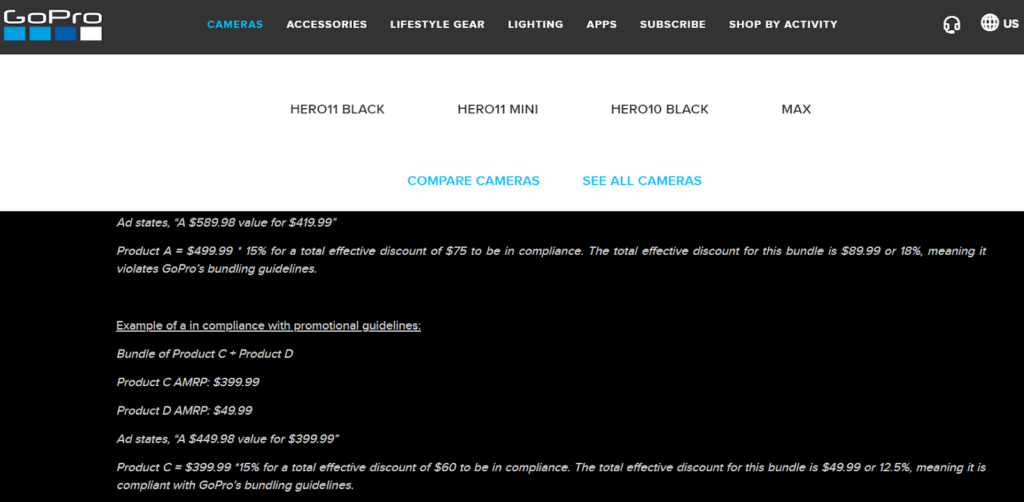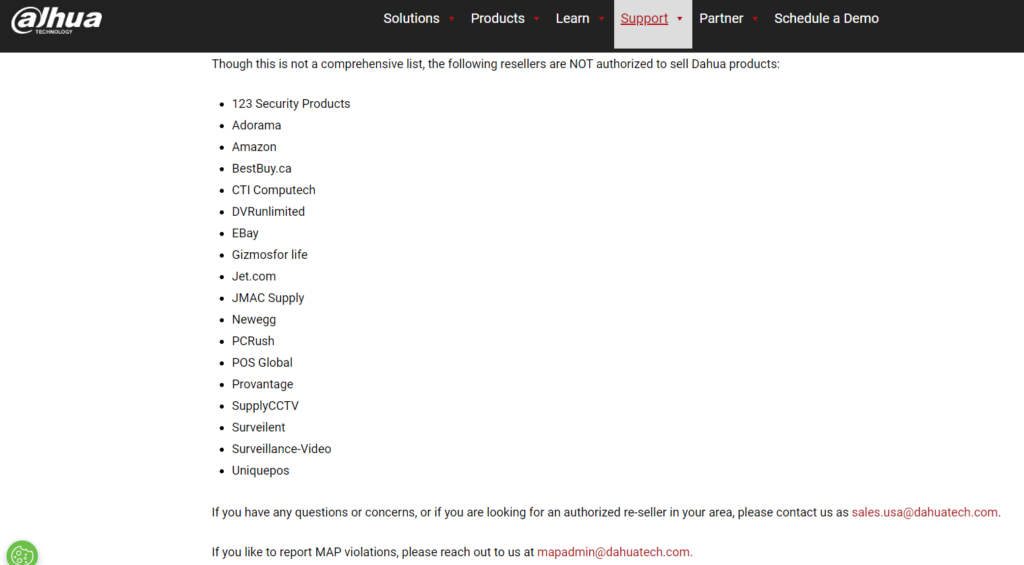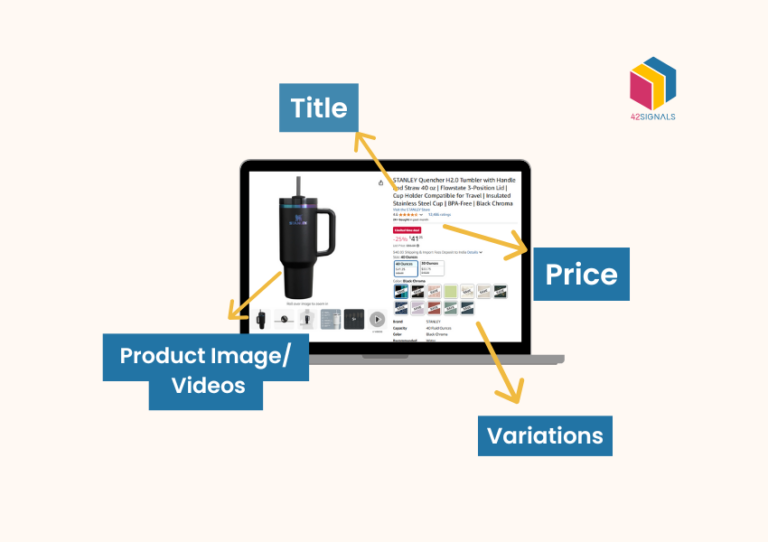In the retail world, pricing isn’t just about covering costs and making a profit; it’s a key part of how your brand is seen by the world. When retailers cut corners on pricing guidelines, it puts a strain not just on the brand’s perceived value but on the whole ecosystem that supports it. The challenge is real for brands striving to keep their marketplace fair while upholding the prestige and integrity of their products.
Navigating the complexities of MAP (Minimum Advertised Price) violations requires a mix of vigilance, strategy, and sometimes, creativity. It’s about finding the right balance that benefits both the brand and its network of retailers, ensuring that everyone plays by the rules for the greater good of maintaining a brand’s standing in the competitive retail landscape.
Real-World Examples of MAP Violations
1. Birkenstock vs. Costco: Violation of MAP
Costco was reported to be selling Birkenstock products for significantly less than the usual retail price, in some instances, as little as one-third of the standard cost. This situation caught the attention of both consumers and Birkenstock itself.

Source: Your Next Shoes
The primary concern for Birkenstock was the impact on its brand image and the potential undermining of its Minimum Advertised Price Violations (MAP) policy. Selling high-quality products at such low prices could devalue the brand’s perceived worth and disrupt its carefully managed pricing strategy across other retail channels.
The company issued statements advising customers against purchasing their products from unauthorized retailers like Costco. The rationale was to ensure customers receive the quality and customer service Birkenstock promises, which might not be guaranteed through unauthorized channels.
These scenarios demonstrate the importance of a robust MAP policy and the need for ongoing monitoring of how products are sold across different retail channels. It also highlights the effectiveness of clear communication with consumers about the value of purchasing from authorised sources to protect brand integrity and customer satisfaction.
2. Puma India’s Strategic Approach to Combat Pricing Violations with Data Analytics
Puma India, a front-runner in the sportswear market, encountered a significant hurdle that threatened its market positioning and brand equity. The challenge centred around rampant pricing violations across numerous online marketplaces, undermining the brand’s carefully crafted pricing strategy and devaluing its perceived consumer value.

The core issue at hand was the inconsistency in Puma’s product pricing across various digital retail platforms. Unauthorized discounts and promotions by online retailers led to a diluted brand image, confused customers, and potentially compromised retailer relationships. Puma India needed a robust solution to monitor and enforce its Minimum Advertised Price Violations (MAP) policy effectively across the board.
In its quest for a resolution, Puma India partnered with a leading data analytics firm specializing in extracting and analyzing complex web data. The firm employed advanced web scraping technologies coupled with sophisticated analytics to develop a comprehensive solution for real-time monitoring of online retail prices.
The strategic implementation of this data analytics solution delivered significant outcomes for Puma India:
- Restoration of pricing consistency across online marketplaces, reinforcing the brand’s value proposition.
- Strengthened relationships with compliant retailers, fostering a collaborative environment based on mutual trust and respect.
- Enhanced brand integrity and consumer trust, leading to a stabilized market position and safeguarded revenue streams.
3. Understanding GoPro’s MAP Violation

In the competitive world of action cameras and tech gadgets, GoPro stands out not only for its innovative products but also for its strategic approach to maintaining market integrity through its Minimum Advertised Price (MAP) policy. GoPro updates its MAP guidelines several times per quarter to ensure fairness and consistency across all selling platforms. A critical aspect of these guidelines involves bundling policies, where the effective price of a bundle cannot exceed a 15% discount off the highest-priced item in the bundle. This rule applies even when incentives like coupons, gift cards, or points are offered.
Consider a scenario where two GoPro products, Product A with a Maximum Resale Price (MRP) of $499.99 and Product B priced at $89.99, are bundled together. The original bundle price is marked at $589.98, with a promotional offer reducing the price to $419.99. According to GoPro’s MAP policy, the total effective discount in this bundle should not exceed $75 (15% of the highest-priced item, Product A).
However, the advertised discount amounts to an 18% reduction, surpassing the allowed limit as per GoPro’s bundling guideline. This situation constitutes a minimum advertised price violation, as the 3rd-party seller (3P seller) has advertised a bundle discount exceeding the company’s stipulated threshold.
Upon identifying this MAP violation, GoPro’s response involves a series of steps aimed at rectifying the situation while upholding the brand’s pricing standards and market reputation. For sellers repeatedly violating the MAP policy, GoPro may enforce stricter measures, such as revoking the authorization to sell GoPro products or pursuing legal action to protect its brand integrity.
GoPro’s proactive and stringent enforcement of its MAP policy underscores the company’s commitment to fair competition and brand value preservation. This approach not only benefits GoPro but also ensures that customers receive consistent value and pricing across all purchasing platforms.
4. Dahua’s Approach to MAP Violations
Dahua Technology, a global titan in the production of intelligent video surveillance cameras, operates under the brand names Dahua, Lorex, and IMOU.
Dahua’s MAP (Minimum Advertised Price) policy is a cornerstone of its strategy to maintain the integrity and value of its products in the market. By advising customers to steer clear of products sold by unauthorized sellers, Dahua aims to ensure that consumers receive the high-quality support and product reliability they expect.
Dahua’s response to MAP violations is methodical and firm. Initially, violators receive a warning, signalling Dahua’s commitment to enforcing its policies while offering an opportunity for correction. Repeated disregard for the MAP policy triggers a decisive reaction – the automatic termination of the distributor’s relationship with Dahua and the classification of the seller as unauthorized. This approach underscores the serious implications of failing to adhere to Dahua’s pricing guidelines.

Dahua Technology’s comprehensive approach to managing its MAP policy exemplifies how brands can navigate the challenges of maintaining product integrity in the digital age. By establishing clear guidelines and consequences for violations, Dahua not only protects its brand value but also reinforces the importance of authorized selling channels, thereby fostering a healthier market environment for all stakeholders involved.
5. Apple Proactively Monitors MAP Violators in Real-time
Apple ensures its prices are the same across all its sales channels, keeping a close eye out for any retailers who might try to undercut these set prices. If a retailer does break these rules, Apple isn’t shy about cutting ties or limiting its supply. To prevent these undercut prices in the first place, Apple keeps the profit margins tight for its distributors, such as Walmart and Best Buy, making it hard for third-party sellers to go below the agreed Minimum Advertised Price (MAP).
In Conclusion
Digital Shelf Analytics plays a pivotal role in the modern e-commerce landscape, especially when it comes to upholding Minimum Advertised Price (MAP) policies. By leveraging the power of data analytics, brands can monitor and analyze their online presence across various retail platforms to ensure pricing consistency and detect any MAP violations. This is crucial for maintaining brand integrity, protecting retailer margins, and ensuring a level playing field in the highly competitive online market.
Digital Shelf Analytics tools scan through vast amounts of online data to identify discrepancies in product listings, including prices that fall below the agreed MAP. This real-time insight allows brands to quickly address and rectify any violations, often before they can significantly impact sales or brand perception. Additionally, these analytics can provide valuable feedback on product performance, competitor activity, and market trends, enabling more strategic decision-making.
Digital Shelf Analytics, with the support of platforms like 42Signals, offers brands a powerful tool to safeguard their pricing policies, protect against unauthorized discounting, and maintain a strong and consistent brand image across all online sales channels. By embracing these technologies, brands can navigate the complexities of online retail with confidence, ensuring their products stand out for all the right reasons on the digital shelf. For MAP Solutions, get in touch with us at sales@42signals.com







